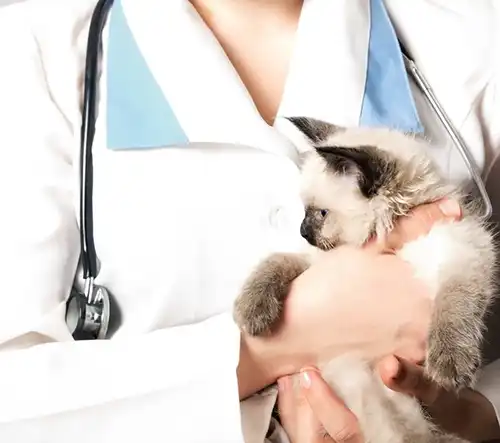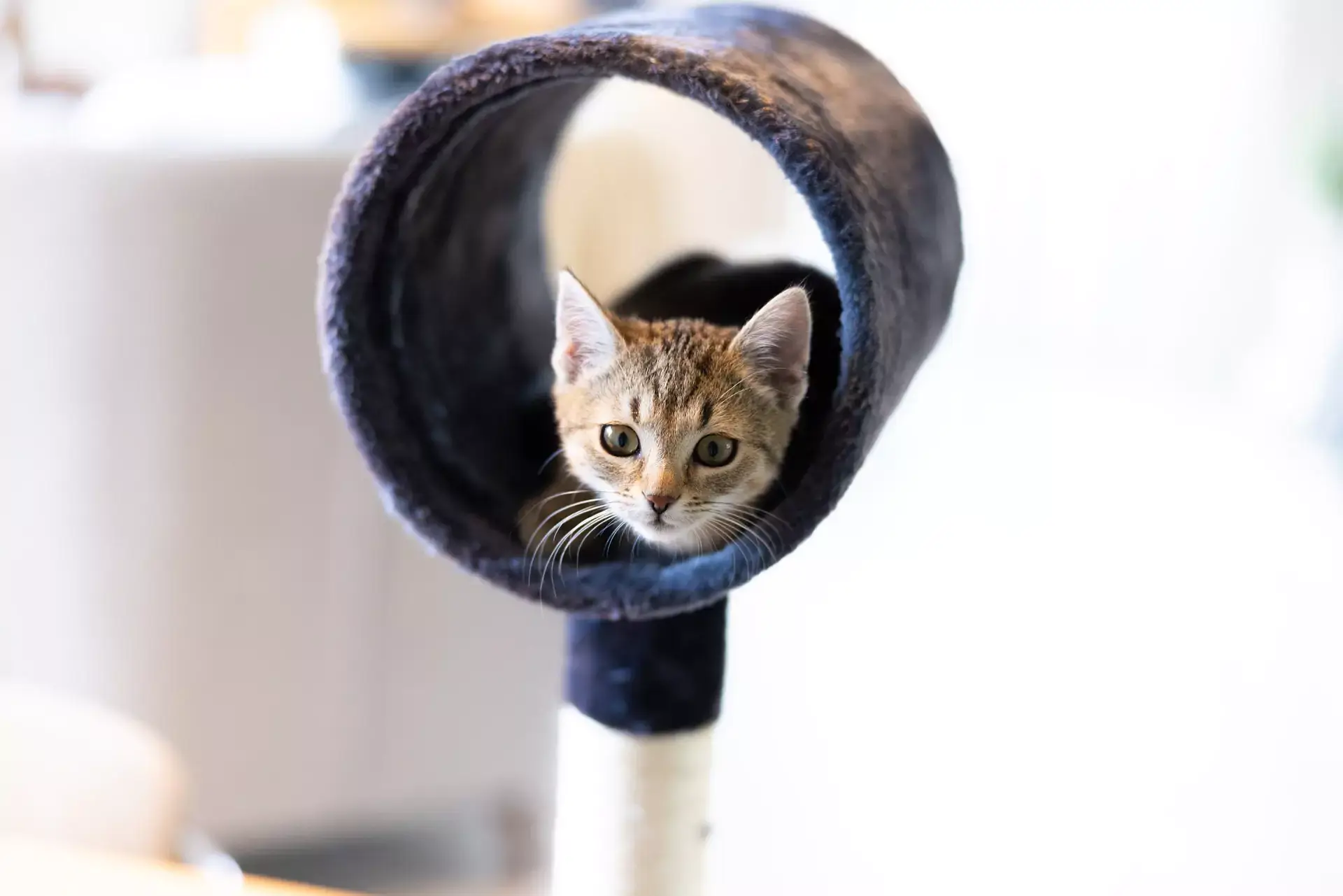Are you considering microchipping your pet but have questions about the process? You’re not alone. Many pet owners seek clarity on this important topic. In this article, we’ll address the basic FAQs about pet microchipping to help you make an informed decision. Microchipping is a simple and effective way to increase the chances of reuniting with your furry friend if they ever get lost. We’ll cover how microchips work, the procedure involved, and address common concerns about safety and privacy. By understanding the ins and outs of pet microchipping, you can take a proactive step toward ensuring your pet’s well-being. Let’s dive into the most frequently asked questions and provide clear, evidence-based answers to guide you.Have you had your pet microchipped? If not, we strongly advise you to get this done as soon as possible. While the microchip is tiny, it can have a significant impact on your pet’s life. In this article, a Guelph, ON veterinarian answers some microchip-related queries.
What Is A Microchip?
Microchips are typically as little as a single grain of rice. They are radio-frequency identification (RFID) implants, or transponders, housed in extremely small containers.Microchips do not transmit or store information. Every chip has a single piece of information: a unique identification number. This is readable with a sophisticated scanner.
Microchips: How Do They Work?
Microchips are passive: they do not produce any data unless and until they are activated by the scanner. The scanner emits radio waves, causing the chip to broadcast the ID number back to the device. That ID number will then appear on the scanner’s screen.
When Do Microchips Get Used?
Veterinarians and animal shelter staff frequently use microchips to check on missing dogs and locate their owners. If the pet is chipped, they can contact the owner. Thousands—perhaps millions—of lost pets have been returned home to their worried owners due to this simple but effective tool.
How Can I Have My Pet Microchipped?
Microchipping your pet is a quick and simple process that only takes a few minutes. It’s often done at the same time as spay or neuter surgery for convenience, but you can easily schedule it separately. For more detailed FAQs about pet microchipping, consult your veterinarian to ensure you’re fully informed about the benefits and how it works.
Is It Painful For Pets To Get Microchipped?
Definitely not! Your vet will inject the chip with a hypodermic needle. It will be positioned beneath your pet’s skin, usually between the shoulder blades. That’s it!Fido and Fluffy describe it as similar to getting a shot.
Will My Pet Require Recovery Time After Being Microchipped?
No. No recovery time is required. A special treat, along with a few extra forehead scritches, might be suitable.
How Does the Microchip Connect My Pet To Me?
Remember the ID number we mentioned? That number is tied to your records in the chip manufacturer’s database. That’s how it forms an invisible link between you and your furry friend. Once your four-legged companion has been microchipped, you must update your information in the chipmaker’s register. For more information, talk with your veterinarian.
What Happens After My Pet Has Been Microchipped?
Microchipping is primarily a one-time process and isn’t considered surgery. However, if you move or change your email address or phone number, it’s important to update this information in the microchip database. Without accurate contact details, the microchip won’t be able to help reunite you with your pet. For more faqs about pet microchipping, make sure you’re familiar with the registration process and how to keep your details up to date.It’s also a good idea to have your veterinarian inspect the chip at your pet’s regular checkups. This is only to ensure that it hasn’t fallen out of place or failed.
Can A Microchip Be Used To Track Your Pet?
No. Microchips are not compatible with GPS tracking, and they are unlikely (but not impossible) to become so in the future. This is because GPS systems require some kind of power to function. Obviously, placing batteries in Fido and Fluffy is not an option. (Sadly, the chip also won’t reprogram your dog to stop chasing squirrels or get your cat to stop knocking things off your desk.) While we may someday discover a power source powered by purrs and tail wags, we are not there yet in terms of technology.It’s worth noting that some products, such pet doors and bowls, can be linked to microchips. These doors, for example, allow Fido to enter and exit the yard at will via a doggy door while keeping the raccoon out. Or, if Fluffy and Mittens require separate foods, you can acquire bowls that only open for the appropriate furball.
Is It Necessary To Get A GPS Tag For My Pet?
GPS tags are an awesome invention! However, you should perform extensive research before making a purchase. Several distinct products are available. There are many different options for subscription costs, range, technology used, battery life, and water resistance. Some work on Wi-Fi or through cell towers, while others use satellites.
How Long Do Pet Microchips Last?
Microchips currently have a lifespan of around 25 years. That is far beyond the lifespan of dogs and cats. Birds, on the other hand, live significantly longer lives. If you have a microchipped bird, you may need to change Polly’s chip eventually.
Are Pet Microchips Really Worth It?
That is a resounding yes from us. The microchip is a low-cost, one-time investment that could one day save your pet’s life! This is absolutely a scenario where having something and not needing it is way better than needing something and not having it.
Can You Microchip Your Pet From Home?
Absolutely not. This is a medical procedure that should only be performed by a trained veterinary care practitioner. Trying to accomplish it on your own could go horribly wrong. Not only might you harm your pet, but it’s also illegal in many countries. You could face legal action. In certain regions, this could even be considered animal abuse, which is a felony.
Is There Any Risk in Having My Pet Microchipped?
Microchipping is extremely safe, and many faqs about pet microchipping address common concerns. After the procedure, your pet may experience minor swelling or irritation, but this typically resolves within a day or two. If any issues continue, consult your veterinarian, though prolonged problems are rare.
What Are The Advantages Of Microchips?
Microchips operate as an invisible safety net, connecting you and your pet. They have a few features that tags don’t. They are permanent, for starters. They cannot be cut or removed as readily as collars and tags, and your pet will not rip or chew on them.They are also easy to maintain. Simply log in to your manufacturer account and update your details as needed. They are also legally admissible as evidence in court. That can be a game changer in theft cases.
Will ID tags For My Pet Still Be Necessary?
Absolutely! Tags are still the simplest way for someone to connect you with your pet. In addition, they are legally mandated in several countries.
Can Smartphones Scan Microchips?
Sadly, no. Smartphones can perform a lot of things, but there are no apps for reading chips. Given that microchips use a distinct technology, this is unlikely to alter.
Can A Magnet Remove A Pet Microchip?
No. Microchips do not use magnetism.
Why Should I Microchip My Pet?
This is a fundamental aspect of responsible pet ownership. Don’t believe that your pet will never run away. Even the most devoted and faithful pet might be misplaced or stolen. In fact, one out of every three pets will go missing at some point in their life! Unfortunately, only approximately 10% of pets who are not microchipped will ever return home. Microchips can make a big impact in this situation. They have permitted the joyful reunions of thousands—if not millions—of missing dogs with their concerned owners, often years after the creature went missing!
FAQs About Pet Microchipping in 2025
Can smartphones scan microchips?
Smartphones are not capable of scanning pet microchips. Pet microchips utilize radio-frequency identification (RFID) technology, which requires specialized scanners to read the embedded unique identification numbers. These scanners emit radio waves that activate the passive microchip, prompting it to transmit the ID number back to the scanner’s display. Smartphones lack the necessary hardware to perform this function, and currently, no apps or attachments can enable them to read these microchips. Therefore, if a lost pet is found, it should be taken to a veterinarian or animal shelter equipped with a proper microchip scanner to identify and contact the owner.
What happens if I adopt a pet with a microchip?
When you adopt a pet with a microchip, the first step is to update the microchip registration with your contact information. The microchip contains a unique identification number linked to the owner’s details in the manufacturer’s database. By contacting the microchip company, you can transfer the registration to your name, ensuring that if your pet ever gets lost, animal shelters or veterinarians can scan the chip and reach you. This process is typically straightforward and may involve a small fee. Keeping the microchip information current is crucial for reuniting you with your pet if they ever go missing.
Why does microchipping beat tattooing?
Microchipping is superior to tattooing for pet identification due to its permanence and reliability. A microchip provides a unique identification number linked to the owner’s contact information in a secure database, making it tamper-proof and difficult to remove. Veterinarians and shelters universally use scanners to read microchips, ensuring lost pets can be quickly reunited with their owners. In contrast, tattoos can fade, become illegible over time, or be altered, and they are not standardized globally. Tattoos may also be overlooked during a search for identification. Therefore, microchipping offers a more effective and dependable method for ensuring a pet’s safe return if lost.
How well does microchipping work? (Statistics on reuniting lost pets)
Microchipping has proven to be highly effective in reuniting lost pets with their owners. Studies indicate that microchipped dogs are returned to their families about 52% of the time, compared to only 22% for dogs without microchips. For cats, the difference is even more significant: microchipped cats are reunited approximately 38% of the time, while non-microchipped cats are returned less than 2% of the time. These statistics demonstrate that microchipping greatly increases the likelihood of a lost pet being safely returned home, making it a valuable investment in your pet’s well-being.
Can other animals besides cats and dogs be microchipped?
Yes, many animals besides cats and dogs can be microchipped. Birds, especially exotic or valuable species, are often microchipped for identification and recovery if they go missing. Horses commonly receive microchips for identification purposes, particularly in competitive events or for breeding records. Small mammals like rabbits, ferrets, and even guinea pigs can benefit from microchipping. Reptiles such as turtles and snakes are also candidates under certain circumstances. The procedure is similar across these species and provides a reliable method of permanent identification, which is especially helpful for animals that cannot wear collars or tags.
Schedule a Microchipping Appointment with Your Guelph, ON Veterinarian
Does your pet need to be microchipped? Make an appointment at your
Guelph, ON, veterinarian clinic. We’re ready to assist!






!Social Media Icons